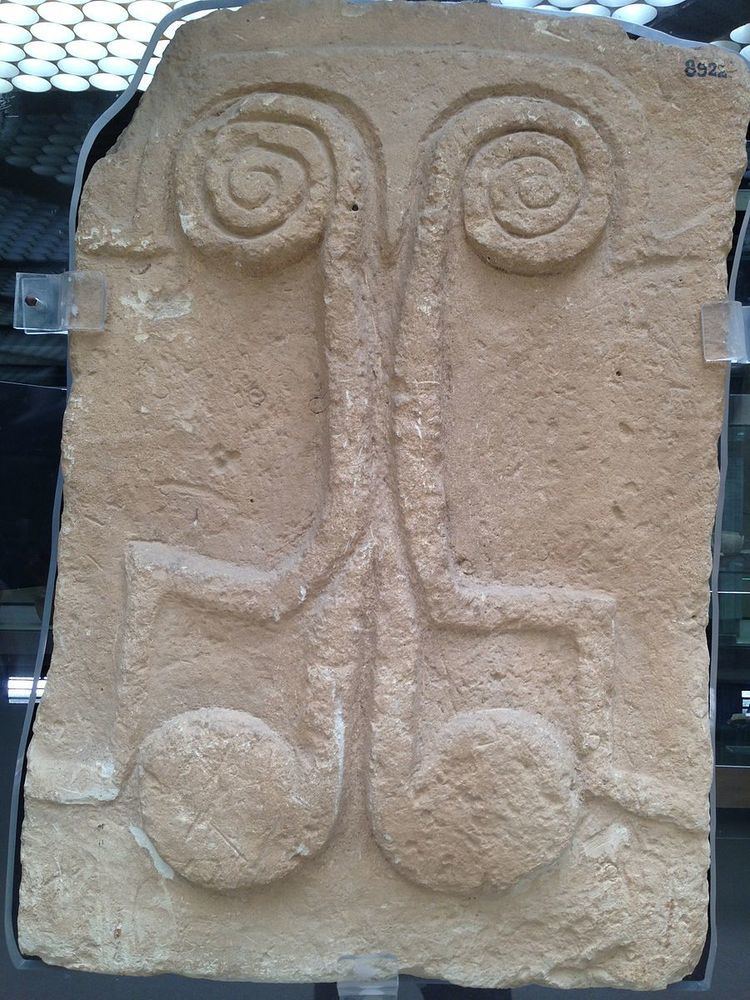 | ||
Castelluccio culture is an archaeological feature dating to Ancient Bronze Age (2000 a.C. approximately) of the prehistoric civilization of Sicily, originally identified by Paolo Orsi on the basis of a particular ceramic style, in the homonymous village, between Noto and Siracusa.
The discovery of a prehistoric village in Castelluccio di Noto, allowed to know, next to the remains of prehistoric circular huts, a Ceramic class decorated with brown lines on a yellow-reddish background, and also tri-color with the use of white. The weapons used in the days of Castelluccio culture were green stone and basalt axes and, in the most recent settlements, bronze axes. Frequent carved bones, considered idols similar to those of Malta, and of Troy II and III. Burials were made in rounded tombs carved into the rock, with doors with relief carving of spiral symbols and motifs that evoke the sexual act. Castelluccio culture is dated to a period between 2200 BC and 1800 BC, although some believe it to be contemporary to Middle-Late Helladic period (1800/1400 BC).
Castelluccio culture was present in the villages of south-east Sicily, Monte Casale, Cava d'Ispica, Pachino, Niscemi, Cava Lazzaro, near Noto, of Rosolini, in the rocky Byzantine district of coasts of Santa Febronia in Palagonia, in Cuddaru d' Crastu (Tornabé-Mercato d'Arrigo) near Pietraperzia, where there are the remains of a fortress partly carved in stone, and - with different ceramic forms - also near Agrigento in Monte Grande. The discovery of a cup of Etna type in the area of Comiso, among local ceramic objects led to the discovery of commercial trades with Castelluccio sites of Paternò, Adrano and Biancavilla, whose graves differ in making due to the hard basaltic terrain and also for the utilization of the lava caves as chamber tombs.
In the area around Ragusa have been found evidences of mining of the ancient residents of Castelluccio; tunnels excavated by the use of basalt bats allowed the extraction and production of highly sought flints. Some dolmens, dated back to this same period, with sole funeral function, are found in different parts of Sicily and attributable to a people not belonging to the Castelluccio Culture.
